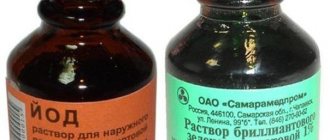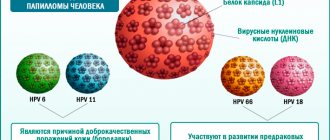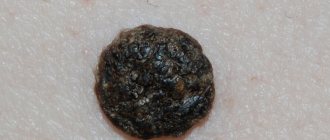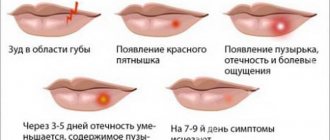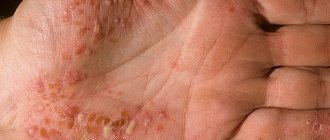Human papillomavirus is an infectious disease transmitted sexually and domestically. People become infected with a similar disease through direct bodily contact with an infected person. Virus particles penetrate microcracks that form on the skin or mucous membrane of the body and affect almost the entire body. More than a hundred types of infection are known. Some of them are particularly oncogenic. HPV type 52 in women is one of these, so this disease can cause not only complex pathologies of the genital organs, but also cancer itself. Therefore, a woman should not ignore scheduled visits to the gynecologist.
What is HPV type 52?
Papillomavirus type 52 is asymptomatic for a long time, so it is difficult to diagnose in the early stages of infection. After a long period of time, the active phase enters into action, during which growths appear on the skin. In men, human papillomavirus 52 is less common than in women, since the structure of the organs in the pelvis is conducive to infection, where the virus penetrates more quickly.
How is it transmitted?
Papillomavirus type 52 manifests itself in the body when the functions of the immune system are reduced. This can happen due to:
- smoking;
- hormonal imbalances;
- diseases affecting the immune system.
Infection occurs when the virus penetrates injured skin or mucous membranes. HPV is often transmitted through sexual contact. When a person’s immunity is weakened, the virus ends up in the deep layers of the epidermis and leads to disruptions in the physiological processes of dermal cells. Because of this, the cells divide differently and a growth appears on the skin, developing into a papilloma or condyloma.
HPV type 52 - what is it? Why does the disease occur in women?
Treatment of papillomavirus is not easy. It requires patience and strict adherence to all recommendations.
You should not resort to therapy on your own; such actions can cause unforeseen negative consequences.
Most often, auxiliary drugs that make up complex therapy for the virus come to the aid of a person.
Typically, therapeutic measures consist of taking antiviral drugs, immunomodulators and direct removal of formations.
Antiviral drugs help a weakened immune system fight papillomavirus type 52. Without this procedure, all actions will not give the desired result.
Drugs that stimulate the immune system help activate the body's natural defenses. Thus, the opposite effect of the infectious process occurs. Weakened immunity is strengthened, and the developed infection is exposed to medications.
The most famous drugs of these groups are considered to be:
- Allokin Alpha.
- Alpizarn.
- Viferon.
- Cycloferon.
- Isoprinosine.
- Novirin.
Medicines are prescribed exclusively by the attending physician. Many of them have a list of contraindications and side effects. External manifestations of the virus are removed using special procedures.
Cryodestruction is the most common procedure for removing condylomas. It occurs using liquid nitrogen, which has the necessary properties for freezing formations.
Electrocoagulation involves the effect of electric current on a skin formation. After a session of this method, a small thermal burn remains at the site of removal.
Radio knife or radio wave irradiation. The most gentle way to get rid of unwanted growths. This method is not used for people with cancer.
Surgical excision is a very responsible type of operation. This method is rarely used and requires care and professional experience.
Laser removal is a popular and effective method of treating condylomas.
Article verified
by the editors
It is worth noting that the treatment strategy for HPV 52 in women is determined by the doctor based on the stage of the disease. Corrective actions are carried out by medical workers in three approaches:
- Organization of preparatory procedures. Such manipulations are necessary in the presence of concomitant diseases: STDs, candidiasis, inflammation and vaginal dysbiosis. After taking the necessary measures, favorable conditions for the development of the underlying pathology are eliminated.
- Surgical intervention. It is carried out by any of the following methods: cryodestruction, scalpel removal, laser or radio wave exposure, electrocoagulation.
- Immunotherapy is the final stage. Performed immediately after surgery, its essence is to support the body’s defenses with the help of medications. For this purpose, drugs with interferon or its inducers are prescribed: “Viferon”, “Cycloferon”, “Amiksin”.
During the rehabilitation period, experts recommend taking herbal decoctions. Elecampane, St. John's wort, lemon balm, oregano, rose hips - an approximate list of useful plants.
Unfortunately, most often, papillomavirus 52 strain is diagnosed in women already at the stage of dysplasia and the tendency of healthy cells to become malignant. The virus can be diagnosed in a timely manner only if a woman goes to the gynecologist once a year for the purpose of prevention and undergoes all the necessary tests.
Diagnostic measures are as follows:
- a doctor examining a woman’s history, collecting complaints and examining her in a chair using mirrors;
- colposcopy, biopsy and histology to identify cancer cells in the cervix;
- Digen test, which allows you to evaluate the characteristics of the virus;
- PAP test.
Most often, these studies are enough to determine the presence of the virus, assess its oncogenicity and determine its activity. If necessary, the patient can be referred for consultation to a proctologist, dermatovenerologist, surgeon or oncologist.
Based on the examination results, the doctor can draw the following conclusions:
- Degeneration of the mucous epithelium. In this case, to exclude the development of oncology, the woman is prescribed intensive antiviral therapy.
- The presence of malignant cells – cervical oncology.
HPV (human papillomavirus) is a dangerous infectious disease transmitted through blood or sexual contact. The virus seeps through microcracks in the body and in a short time infects the entire body.
There are several types of infection, some of which are considered particularly dangerous. HPV type 52 is oncogenic; it causes serious pathologies of the body, tumors of the genital organs.
Therefore, women need to be especially careful about their bodies and constantly visit a gynecologist.
Regular visits to the gynecologist will help prevent complications of HPV
Clinical manifestations in women and men
The presence of HPV type 52 provokes the growth of papillomas on the genitals and anus.
When the type 52 virus enters the body, the patient develops growths on the external genitalia or in the anal ring. In this case, the patient does not experience additional symptoms. Other symptoms in the form of itching or burning develop only in cases of simultaneous infection with other sexually transmitted diseases.
When immunity is weakened, growths on the genital organs, located on the labia in women and on the shaft of the penis in men, increase in size, grow together and resemble entire colonies. In rare situations, papillomas and condylomas disappear on their own without treatment for the virus. This is due to the fact that the body itself defeated the virus. However, this does not mean that HPV has completely left the body. Therefore, even in such a situation, it is important to visit a doctor.
Symptoms
Let's take a closer look at HPV type 52 in women, what it is and whether it is possible to cure it. When the virus enters the body, the cervical canal and cervix are damaged, and previously normal tissue cells are gradually transformed into abnormal ones. Depending on the stage of the disease, and there are three of them, organ dysplasia (precancerous condition) is detected.
After the DNA of HPV type 52 in women penetrates normal cells, it is further integrated into the genome, resulting in the degeneration and appearance of cancer cells. In this condition, the patient is already diagnosed with oncology, most often cervical cancer. A characteristic feature of the spread of the virus is that it almost always involves large areas of the genital organs in the pathological process, and also metastasizes.
By nature, the pathology is considered long-term, since from the moment of infection and the formation of dysplasia to the onset of cancer, it can take from 10 to 20 years. In approximately 32% of clinical cases, if HPV type 52 in women is detected at the initial stage, with proper treatment, the progression of the pathological process stops.
Understanding the DNA of a virus. Source: vitiligos.ru
When favorable conditions are created, the disease will always develop. Also, do not forget about the provoking factors under the influence of which the virus progresses:
- The presence of diseases of the genitourinary system of a chronic type (cystitis, colpitis, endometritis, adnexitis, etc.);
- Diagnosed with sexually transmitted diseases (herpes, syphilis, trichomoniasis, gonorrhea, etc.);
- Previously there were miscarriages or abortions;
- There are bad habits in the form of alcoholism and smoking;
- A woman does not eat properly;
- There is congenital or acquired immunodeficiency;
- The illness lasted 2-4 months.
Often, HPV DNA type 52 begins to actively infect healthy cells with reduced immunity. According to statistics, the virus becomes active at the age of approximately 35 years, and when a woman begins menopause, the formations rapidly increase in size. This condition is due to the natural aging of the body, as well as hormonal changes.
Complications of HPV type 52
If the required HPV treatment has been carried out, the high risk of complications can be avoided in the vast majority of situations. If the patient does not seek help in a timely manner, a number of serious complications may arise. One of them is cervical dysplasia. The disease sometimes provokes infertility and the subsequent appearance of cervical cancer.
Papillomas and condylomas, which were provoked by human papillomavirus type 52, often occur on the cervix. Gradually increasing in size, they increase the area of infection, and over time can degenerate into a malignant formation. If the disease is not treated in a timely manner, then at the age of 45, the risk of transformation of benign formations into cancer increases significantly. This is due to the fact that upon reaching this age, women experience menopause, which leads to hormonal disruptions. Decreased immunity creates favorable conditions for degeneration into an oncological tumor.
In addition, virus 52 sometimes provokes colon and rectal cancer. This disease occurs less frequently in females than in males. During anal sex with an infected partner, the virus is transmitted to a healthy partner and condylomas appear in the anal area. They can even form in the rectum, but it is almost impossible to detect growths until they reach a particularly large size.
HPV type 52 affects comfort during enuresis and bowel movements, and the functioning of the gastrointestinal tract.
If you suspect colorectal cancer, it is important to visit a doctor. The disease has the following symptoms in individuals of both sexes:
- stool disorders;
- excessive gas formation;
- pain during bowel movements;
- blood in the stool;
- weight loss;
- feeling of a full stomach.
Consequences of HPV
The papillomavirus is dangerous for both men and women. Formations can occur both inside the intestine and outside (around the anus); over time, the cells will change and develop into cancerous ones.
Attention: most women are carriers of this virus, but only in 5% of cases the disease can develop into a malignant form.
Based on these data, we can conclude that it is important to avoid risk factors for the spread of HPV in the body, conduct regular examinations, follow preventive measures and not deviate from the given course of treatment.
HPV type 52 during pregnancy
Since hormonal imbalances and decreased immunity are observed during pregnancy, the human papillomavirus often manifests itself precisely when a woman is expecting a child. It is especially dangerous in a situation where it is diagnosed directly in an interesting situation. Pregnancy with HPV does not allow treatment with antiviral drugs, since sometimes a number of complications develop for both the mother and the unborn child.
In this case, local removal of papillomas and condylomas is acceptable. It is important to note that it is carried out only under the supervision of a doctor. It is forbidden to resort to getting rid of growths on your own, especially during pregnancy. Treatment at home is not only ineffective, but also dangerous, since there is a risk of infection followed by inflammation and suppuration. To remove the growths, they go to a medical institution, where getting rid of condylomas occurs mainly with the help of laser therapy.
Diagnostic measures
You can determine the presence of papillomavirus type 52 in the body and its genotype using the following methods:
Diagnosis of HPV type 52 involves examining the DNA and secretions of the patient's cervix.
| Name | Description |
| PCR | A modern method based on the study of the patient's DNA. Using the analysis, the presence of papillomavirus is determined even when the sample contains only a few molecules of the pathogen. |
| Hybrid grip | A more effective method of examination, for which you need to take a scraping from the cervix. |
Diagnostics
Every experienced women's doctor knows what HPV type 52 DNA is. In most cases, this virus can be diagnosed at the dysplasia stage during a standard gynecological examination. Primary diagnosis is carried out by colposcopy of the cervix and vagina, which allows a very detailed examination of the structure of the mucous membrane and the nature of the cells.
To identify atypical cells, a cytological examination is performed using the Papanicolaou technique. Modern clinics also do a hybrid capture called the Digene test. Biological material is collected for examination from the cervical canal using a special brush.
It is thanks to this analysis that it is possible to establish not just the type of virus that infected the patient’s body, but also to determine the pathogen. It is worth saying that in most cases, types 16 or 18 of oncogenic HPV are detected, and many blood tests have been developed for this; 52 is much less common.
When wondering about HPV type 52 in women, what it is, you need to remember that this disease is malignant. Therefore, if oncogenic cell degeneration is confirmed after the initial diagnosis, the doctor will definitely prescribe additional tests, studies, for example, a biopsy will be necessary, as well as a consultation with an oncologist.
Treatment of the virus
Drug therapy
Treatment of papillomavirus type 52 involves complex therapy, which includes improving the immune system, influencing the virus and local removal of formations. During treatment, patients are prescribed the following medications:
| Type of medication | Name |
| Antiviral |
|
| Interferons |
|
| Interferon inducers |
|
| Vitamins |
|
| Immunomodulators |
|
Drug therapy for HPV type 52 is aimed at eliminating the causative agent of the disease – the virus.
Despite the fact that there is no drug yet that can completely cleanse the body of human papillomavirus type 52, it is important to take all medications prescribed by the doctor. This will reduce the unpleasant manifestations of infection and reduce the risk of complications. It is important to note that the required medication and its required dosage can only be prescribed by the attending physician.
Hardware removal
In addition to conservative therapy, hardware removal of growths on the skin is also performed. Papillomas and condylomas are removed using the following methods:
| Name | Description |
| Laser therapy | Getting rid of tumors occurs with the help of a laser beam. The most common procedure because it is practically painless and no blood is released during manipulation. |
| Cryodestruction | The formations are exposed to cold liquid nitrogen, freezing them. The cells of the growths die, after which a crust appears on the skin, under which new healthy skin grows. During the manipulation, the patient does not feel pain. Using this method you can get rid of even large growths, however, in such cases you will need not one session, but 2 or 3. |
| Electrocoagulation | An electric current is used to cauterize the tumors. The method is very painful, so local anesthesia is used before the manipulation. |
| Radio wave elimination | A device called “Surgitron” is used. Allows you to remove both small growths and large fused tumors. Before the procedure, it is important to undergo local anesthesia, since the procedure is painful. |
Surgical intervention
Removal of papillomas for HPV type 52 is a necessary measure to avoid complications and eliminate discomfort.
If the growth is malignant in nature, then surgical intervention is resorted to. During the operation, the surgeon makes an incision and gets rid of the tumor. The procedure is performed under both local and general anesthesia. The choice of anesthesia depends on the size of the papillomas and condylomas and the patient's preference. Unlike hardware methods for removing growths, surgical intervention has the following disadvantages:
- longer rehabilitation period;
- possibility of bleeding;
- the likelihood of wound infection.
Preventive measures
To prevent infection with the virus, it is important for healthy people to follow these rules:
- do not have promiscuous sex life;
- use a condom during sexual intercourse;
- to refuse from bad habits;
- timely treatment of viral diseases;
- maintain hygiene carefully;
- to live an active lifestyle.
If a person has already been diagnosed with virus 52, in order to prevent the reappearance of growths on the genitals, the following recommendations should be followed:
- visit a gynecologist at least once a year;
- regularly undergo smear tests for ococytology;
- periodically take a blood test;
- perform a colcoscopy.
HPV 52 is a serious infection that often causes a number of serious complications and consequences. It is important for the patient to follow all the recommendations and prescriptions of the treating doctor, since the type 52 virus remains in the body forever. To avoid complications, it is important to take your health seriously and take not only prescribed medications, but also maintain proper nutrition, which will contain sufficient amounts of vitamins and minerals that can improve immunity. This will help the body resist the virus.
Reasons for the development of pathology
Given such a widespread distribution of the disease, a logical question arises as to why condylomas and other symptoms of HPV are not present in almost every person. This is due to the fact that in normal situations the body is quite capable of resisting the disease. It suppresses the activity of the virus, and therefore the incubation period can last for years.
The development of skin tags usually begins after a person's immune system fails. This happens under the influence of a wide variety of factors, from simple stress to serious illness. For example, the activity of a virus in the body can be activated by:
- Unprotected sex;
- Promiscuous sex life;
- Poor nutrition;
- Lack of personal hygiene;
- Adherence to bad habits;
- Lack of important nutritional components;
- Concomitant sexually transmitted diseases;
- Exacerbation of any chronic pathology;
- Infection with the immunodeficiency virus;
- Mechanical damage to the skin.
